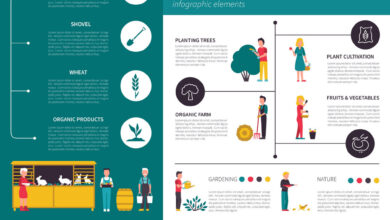
3 Healthy Eating Meditations You Need to Try
3 Healthy Eating Meditations You Need to Try is more than just a catchy title; it’s a roadmap to a healthier, more mindful relationship with food. We all know that eating well is essential for our physical and mental well-being, but sometimes the daily grind of life makes it hard to make conscious choices.
This is where meditation comes in. By incorporating these simple practices into your routine, you can learn to listen to your body’s cues, appreciate the nourishment food provides, and ultimately, make healthier choices that nourish both your body and soul.
Whether you’re struggling with emotional eating, overeating, or simply want to develop a deeper connection with your food, these meditations offer a powerful path to transformation. Get ready to discover the incredible power of mindfulness, gratitude, and body awareness when it comes to building a healthier and happier relationship with food.
Mindful Eating Meditation
Mindful eating meditation is a powerful technique that can help you develop a healthier relationship with food. By bringing your attention to the present moment, you can savor each bite, recognize your hunger and fullness cues, and ultimately make healthier food choices.
Benefits of Mindful Eating Meditation
Mindful eating meditation offers a range of benefits for your physical and mental well-being. Here are some of the key advantages:
- Improved Eating Habits:By paying attention to your food, you become more aware of your hunger and fullness signals, leading to better portion control and reduced overeating.
- Enhanced Food Appreciation:Mindful eating allows you to savor the flavors, textures, and aromas of your food, making meals a more enjoyable experience.
- Reduced Emotional Eating:By becoming more aware of your emotions and how they influence your eating habits, you can learn to manage emotional triggers and make healthier choices.
- Weight Management:Mindful eating can contribute to weight management by helping you eat more mindfully and avoid mindless snacking.
- Improved Digestion:By slowing down your eating pace and chewing thoroughly, mindful eating promotes better digestion and nutrient absorption.
- Increased Body Awareness:Mindful eating fosters a deeper connection with your body, allowing you to better understand your hunger and fullness cues, as well as your overall physical sensations.
Steps to Practice Mindful Eating Meditation
Mindful eating meditation is a simple yet effective practice that can be incorporated into your daily routine. Here’s a step-by-step guide:
- Find a Quiet Space:Choose a comfortable and quiet environment where you can focus without distractions.
- Prepare Your Food:Take a moment to appreciate the appearance of your food. Notice the colors, textures, and aromas.
- Take a Deep Breath:Inhale deeply and exhale slowly, focusing on your breath as you prepare to eat.
- Take a Small Bite:Take a small bite of your food and chew it slowly, paying attention to the taste, texture, and smell.
- Focus on Your Sensations:Notice the sensations in your mouth, such as the temperature, the crunchiness, or the smoothness of the food.
- Observe Your Thoughts and Feelings:Without judgment, observe any thoughts or feelings that arise as you eat. Are you feeling satisfied, bored, or anxious?
- Put Down Your Fork:Pause between bites to reflect on your experience. How does your body feel? Are you feeling full or still hungry?
- Continue Mindful Eating:Continue to eat slowly and mindfully, savoring each bite and paying attention to your body’s signals.
Mindful Eating Techniques
Here are some techniques you can use to enhance your mindful eating practice:
- Focus on the Taste:Pay attention to the different flavors of your food. Notice the sweetness, sourness, saltiness, or bitterness.
- Explore the Texture:Pay attention to the texture of your food. Is it crunchy, soft, smooth, or chewy?
- Inhale the Aroma:Before taking a bite, take a deep breath and inhale the aroma of your food. Notice the different scents and how they change as you eat.
- Engage All Your Senses:Try to engage all your senses when you eat. Pay attention to the sight, smell, taste, texture, and sound of your food.
- Practice Gratitude:Before you start eating, take a moment to appreciate the food you are about to enjoy. Be grateful for the farmers, cooks, and everyone who contributed to bringing this meal to your table.
Gratitude Meditation for Food

Cultivating gratitude for the food we eat is a powerful practice that can transform our relationship with nourishment. It can shift our focus from mere consumption to appreciation for the intricate journey that brings food to our tables. This shift in perspective can lead to healthier food choices, increased mindful eating, and a deeper connection to our bodies and the world around us.
The Impact of Gratitude on Food Choices and Overall Well-being
Gratitude has been shown to have a positive impact on our well-being, including our food choices. When we are grateful for the food we eat, we are more likely to appreciate the flavors, textures, and aromas, leading to greater satisfaction and less overeating.
Want to make mindful eating a habit? Try these 3 healthy eating meditations: gratitude for your food, mindful chewing, and body scan. These practices can help you be more present with your meals and make healthier choices, especially during the holidays! If you’re looking for tips on building a healthier holiday plate, check out this helpful guide: build healthier holiday plate.
By incorporating these practices into your routine, you can navigate the holiday season with a more balanced and mindful approach to eating.
This can also foster a more mindful approach to eating, allowing us to savor each bite and truly connect with the experience. Moreover, gratitude can inspire us to make healthier choices. When we acknowledge the effort and care that goes into producing our food, we are less likely to take it for granted and more likely to choose foods that are nourishing and sustainable.
Mindful eating meditations can be a game-changer for your health, but sometimes, a little extra support in the kitchen can go a long way. Check out this 10 healthy swaps save 300 calories infographic for easy ways to cut down on calories without sacrificing flavor.
Once you’ve got your kitchen on track, those mindful eating meditations will be even more powerful!
This can lead to a more balanced diet, improved physical health, and a stronger connection to the natural world.
Guided Meditation Script for Gratitude for Food
Find a comfortable position, close your eyes, and take a few deep breaths. Allow your body to relax and settle into the present moment.
Imagine yourself in a garden, surrounded by lush greenery and vibrant flowers. Breathe in the fresh air, feeling the warmth of the sun on your skin.
As you breathe in, visualize the bounty of the garden, the fruits, vegetables, and herbs that nourish us. Feel a sense of gratitude for the earth that provides these gifts.
Finding time for healthy eating meditations can be challenging, but they’re incredibly beneficial for mindful eating. To make these meditations even more effective, it’s helpful to master some essential cooking skills so you can create delicious and nutritious meals. Once you’ve got the basics down, you can start incorporating these mindful eating practices into your daily routine for a healthier and more fulfilling relationship with food.
Now, imagine yourself in a kitchen, the aroma of delicious food filling the air. Imagine the hands of the farmers, the producers, and the cooks who have worked tirelessly to bring this food to your table. Feel a deep sense of appreciation for their efforts.
Bring to mind the food you are about to eat. Visualize its colors, textures, and flavors. As you do, feel a sense of gratitude for the nourishment it will provide.
Take a moment to savor the taste of the food, noticing the different flavors and textures. Appreciate the journey that brought this food to your plate, from the earth to your table.
As you finish eating, feel a sense of contentment and gratitude for the nourishment you have received.
Expressing Gratitude for Those Involved in Our Food System, 3 healthy eating meditations you need to try
Beyond the physical act of eating, expressing gratitude for the people involved in our food system is a powerful way to deepen our connection to our food. This can be done in various ways:
- Support Local Farmers and Producers:By purchasing food directly from local farmers and producers, we acknowledge their hard work and contribute to the sustainability of our food system. We can also show our appreciation by engaging in conversations with them, learning about their practices, and sharing our gratitude for their dedication.
- Acknowledge the Labor of Food Workers:We can acknowledge the labor of food workers, including those who harvest, process, transport, and prepare our food, by being mindful of their contributions and appreciating the role they play in our daily lives. We can also advocate for fair wages and working conditions for all food workers.
- Practice Mindful Cooking:Cooking with intention and gratitude can transform the experience of preparing food. We can take the time to appreciate the ingredients, savor the aromas, and enjoy the process of creating a nourishing meal. We can also use this time to reflect on the journey of the food and express gratitude for those who have contributed to it.
Body Scan Meditation for Hunger and Fullness: 3 Healthy Eating Meditations You Need To Try
Paying attention to our bodies’ natural hunger and fullness cues can help us develop a healthier relationship with food. This is where body scan meditation comes in. By focusing on the sensations within our body, we can learn to distinguish between true hunger and other emotions or external triggers that may lead us to eat.
Understanding Body Scan Meditation
Body scan meditation is a mindfulness practice that involves systematically focusing attention on different parts of the body, noticing sensations without judgment. This practice can enhance our awareness of physical signals, including those related to hunger and fullness.
“The practice of body scan meditation can help us become more aware of our hunger and fullness cues, allowing us to make more mindful choices about food intake.”
Benefits of Body Scan Meditation for Eating
Body scan meditation can be a powerful tool for mindful eating. It can help us:
- Distinguish between true hunger and other triggers:Often, we may eat when we are not truly hungry but rather bored, stressed, or emotionally upset. Body scan meditation can help us identify these triggers and differentiate them from genuine hunger.
- Recognize early signs of fullness:We often continue eating beyond our body’s natural fullness signals. By becoming more attuned to these signals through body scan meditation, we can learn to stop eating when we are satisfied, preventing overeating.
- Cultivate a more mindful relationship with food:Body scan meditation encourages us to slow down and savor our food, appreciating its taste, texture, and aroma. This mindful approach can enhance our enjoyment of food and promote a more balanced relationship with eating.
Last Recap
In a world where food is often seen as fuel or a source of pleasure, these meditations invite us to reconnect with the essence of eating. They help us to slow down, savor each bite, and cultivate a sense of gratitude for the nourishment we receive.
By practicing these meditations regularly, we can move beyond simply eating to truly experience the joy and satisfaction that comes from nourishing our bodies with mindful intention.






